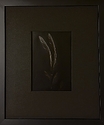Paul Verizzo
Member
I have a friend who is a jaw droppingly accomplished photographer. The first time I went to her house, I was swept by a positive glass plate she has hanging on an indirect sunlit window. The subject matter is a woman dressed in 1950's Dior style, shot on a white seamless paper, she just floats in air. My friend stumbled across this and bought it on the cheap, as I recall. It has just enough "distress" to lend a sense of time and authenticity.
I actually think about it from time to time and have pondered about replicating the idea for both artistic and perhaps commercial reasons.
Since a very large format camera is out of the question for many reasons, my thinking is along the lines of enlarging a 35mm or 120 negative onto Rockland emulsion that, in turn, is on acrylic or glass. Then, of course, reversal processed.
Anyone have any experience on this? I'll try to ask them, but I figger I'll go to those who know!
I actually think about it from time to time and have pondered about replicating the idea for both artistic and perhaps commercial reasons.
Since a very large format camera is out of the question for many reasons, my thinking is along the lines of enlarging a 35mm or 120 negative onto Rockland emulsion that, in turn, is on acrylic or glass. Then, of course, reversal processed.
Anyone have any experience on this? I'll try to ask them, but I figger I'll go to those who know!













